Very interesting information, Steve. Thanks.The following is a translated footnote from "Chapeau, Das Westalgäu behütet die Welt, Die Geschichte der Hutprodukrion in Lindenberg und Umgebung, 2015" (This is a great book that I purchased at the Deutsches Hut Museum Lindenberg). The footnote contains some info on Guben's pre WWII major hat companies C.W. Wilke and Berlin - Gubener Hutfabrik, post WWII VEB Vereinigte HutWerke Guben, and post unification Gubener Hüte GmbH.
"In Guben (city law since 1235, known as cloth-maker town) developed the hat maker Carl Gottlob Wilke 1822 waterproof wool felt hat. His sons - especially Friedrich Wilke - made from the hat maker's workshop the largest Gubener hat factory, the C G. Wilke hair and wool felt hat factory Guben. In addition came as another large business, in addition to several smaller hat factories, the Berlin-Gubener hat factory, founded by Apelius Cohn and Hermann Lewin (Berlin 1859, Guben 1876), which employed in 1922 alone 3000 workers and employees. In 1927, the year of crisis in Westallgäu's straw hat industry, Guben had a total of 7,460 people working in the felt hat industry. In the same year, around 10 million hats were produced, of which around 30 percent were for export. For comparison: In 1925, the city of Lindenberg had a total of 5,168 inhabitants, and in 1927 it was probably not much more. In March 1946, the Berlin-Gubener Hutfabrik was dismantled as reparations to the Soviet Union; 1952 developed from the C. G. Wilke hat factory in conjunction with the other Gubener hat factories, the national VEB Vereinigte Hut-Werke Guben with about 1,200 employees; In 1989, 1.2 million stumps and 800,000 felt hats were produced there.
After the turnaround, the state-owned enterprise was privatized in 1990 by the Treuhandanstalt and transformed into the Gubener Hüte GmbH. The number of employees sank to 600; In 1992 there were still 70, the end of 1999 with 10 employees, the operation was closed. In summer 2006, a hat and technology museum was opened in a building of the old hat factory C. G. Wilke."
"Chapeau, Das Westalgau behütet die Welt, Die Geschichte der Hutprodukrion in Lindenberg und Umgebung, 2015"
Want to buy or sell something? Check the classifieds
-
The Fedora Lounge is supported in part by commission earning affiliate links sitewide. Please support us by using them. You may learn more here.
You are using an out of date browser. It may not display this or other websites correctly.
You should upgrade or use an alternative browser.
You should upgrade or use an alternative browser.
German & Austrian Hutmachers
- Thread starter mayserwegener
- Start date
Beautiful hat, Steve. That stylish liner really does shine.C. G. Wilke "Helios", 58cm, Wool, 186 grams, possibly late 1920s to 1930s. This Wool Stiff Felt is in near mint condition so a great find. The liner really shines especially at the center so that might be the reason for calling it "Helios". I didn't get a good photo of the label because I didn't want to break the super fine threads that hold the sweatband together. The sweatband has a reed on the outer edge which is fairly common with old German and Austrian Stiff Felts.
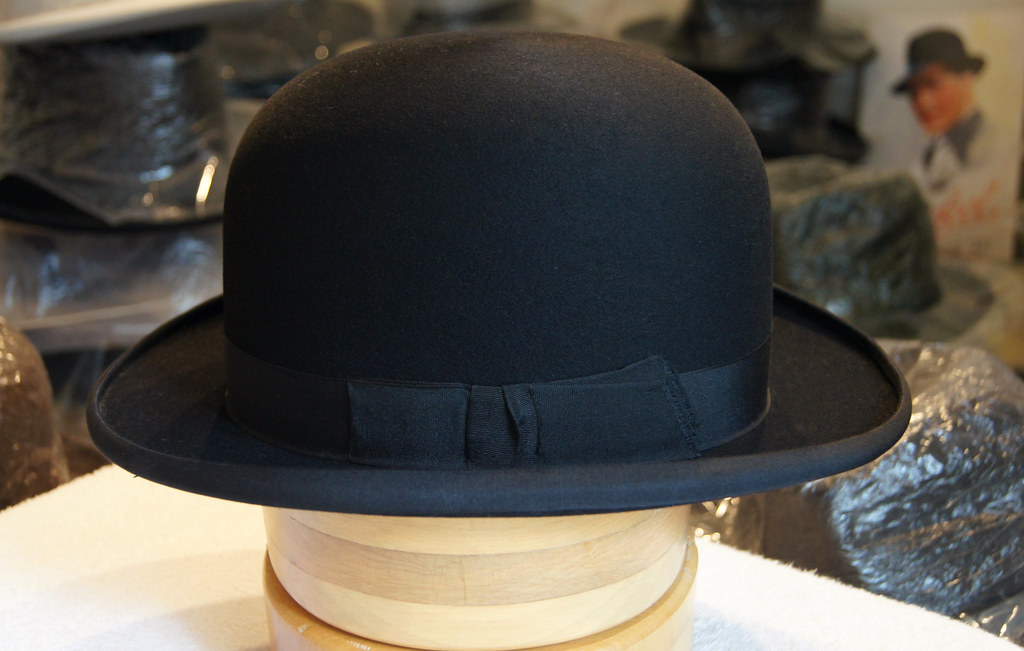
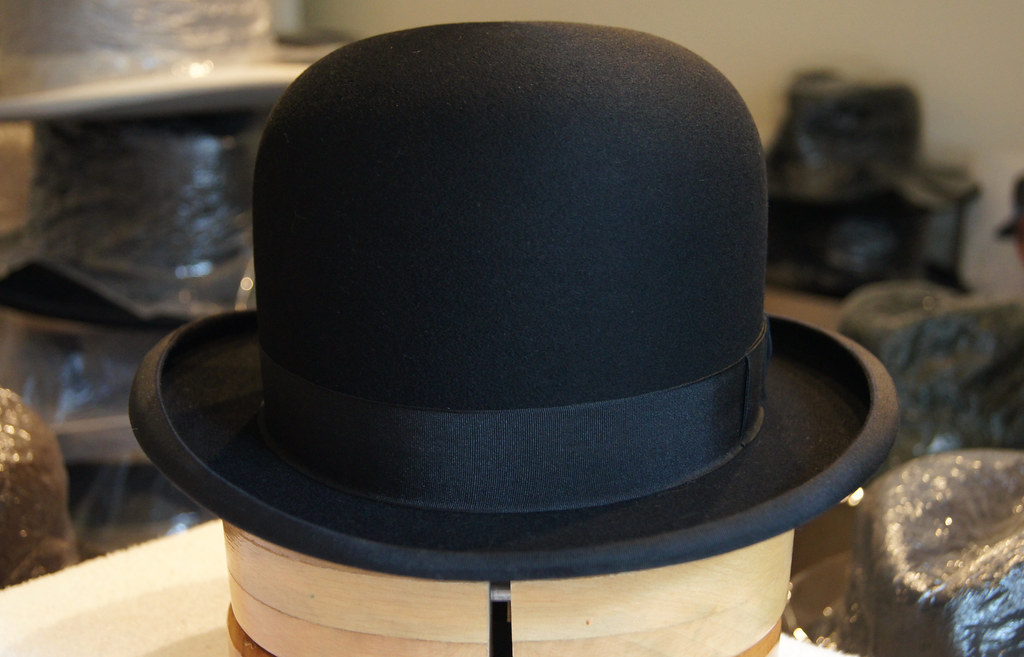
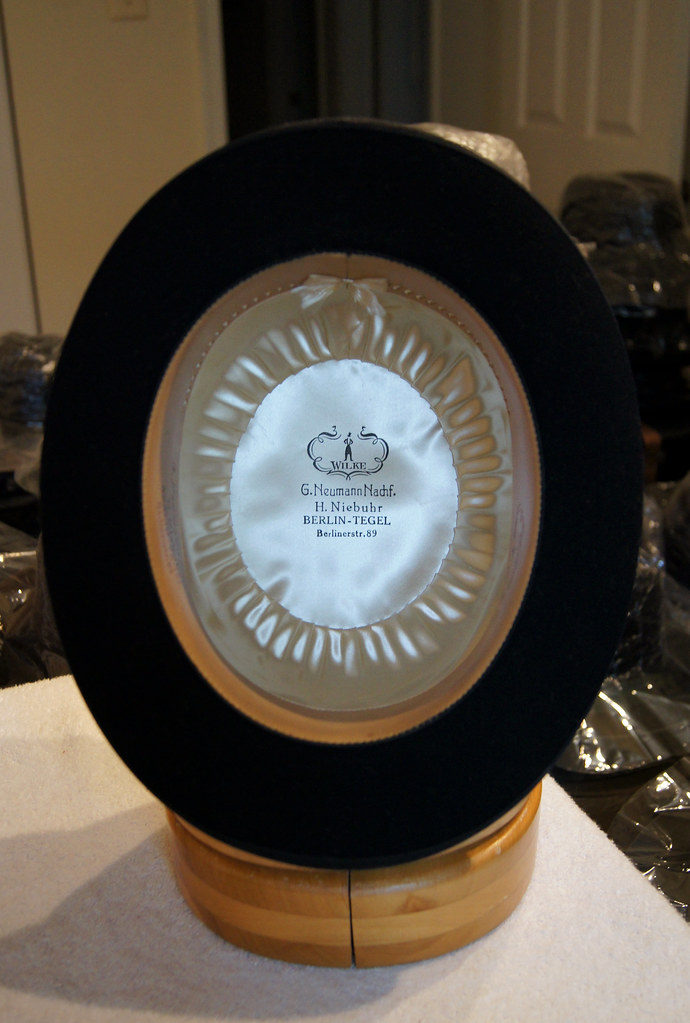
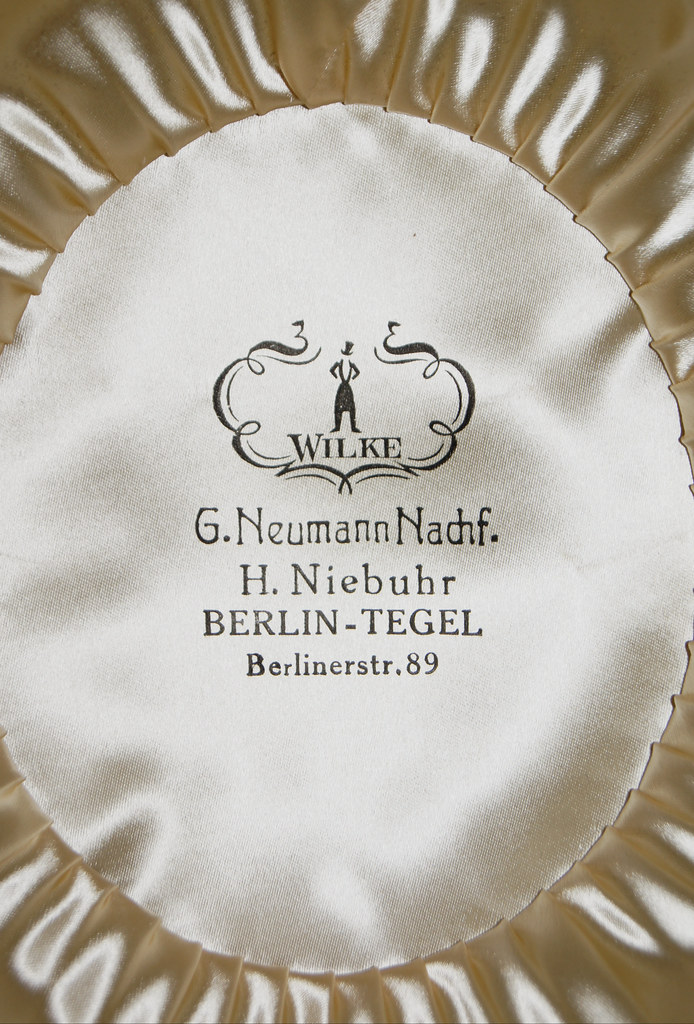
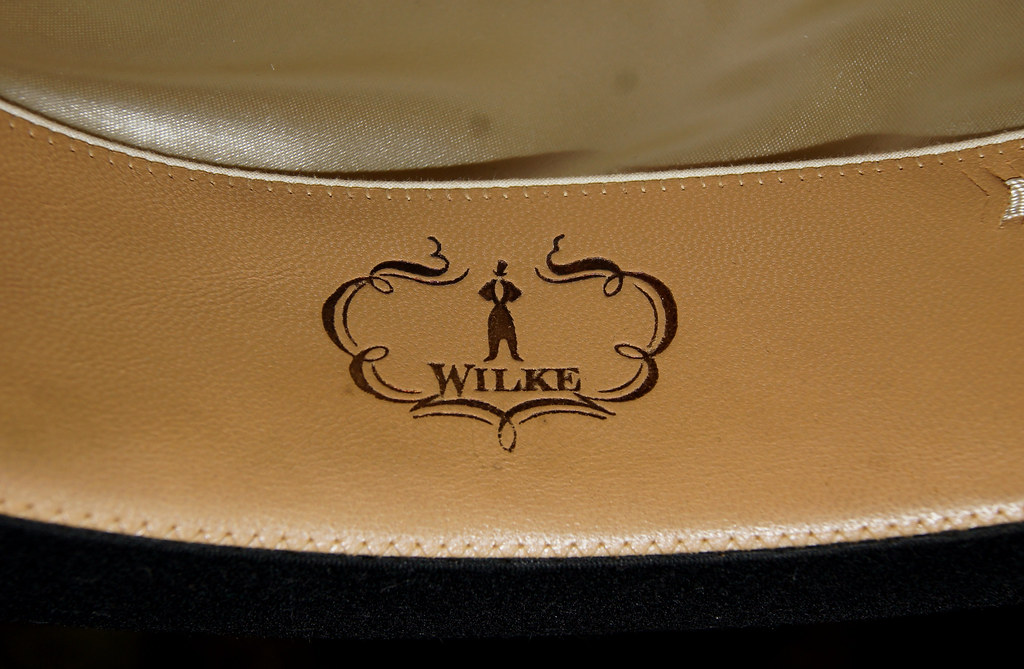
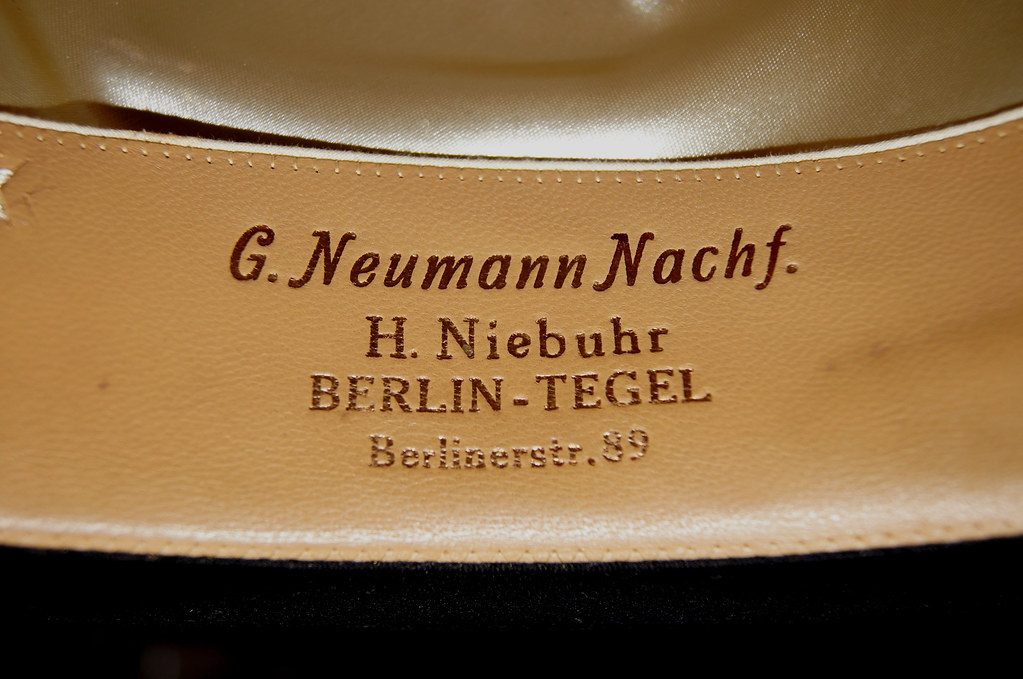
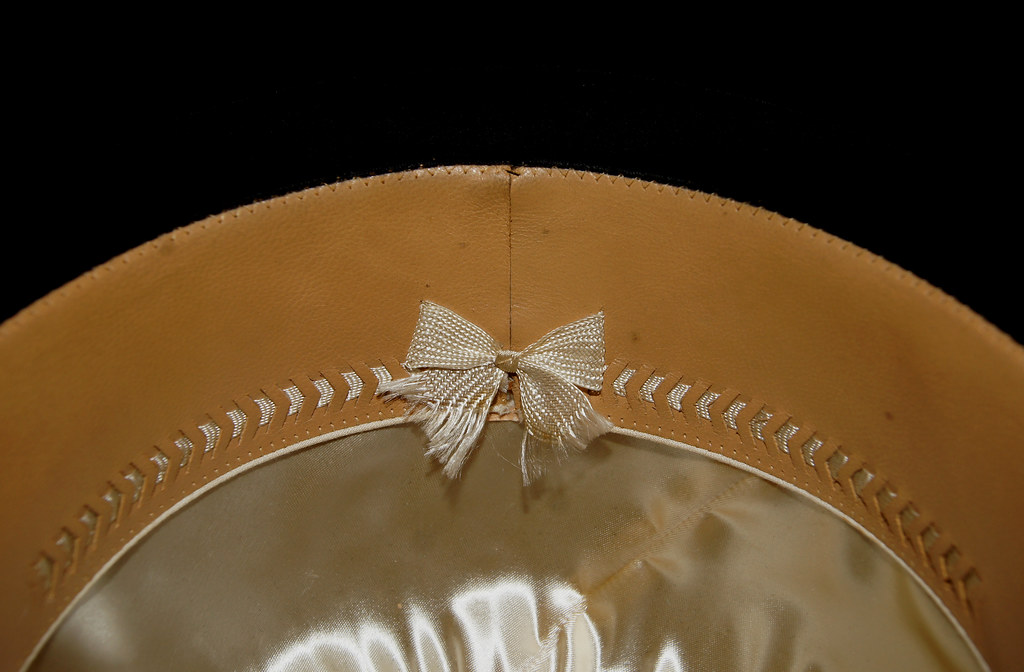
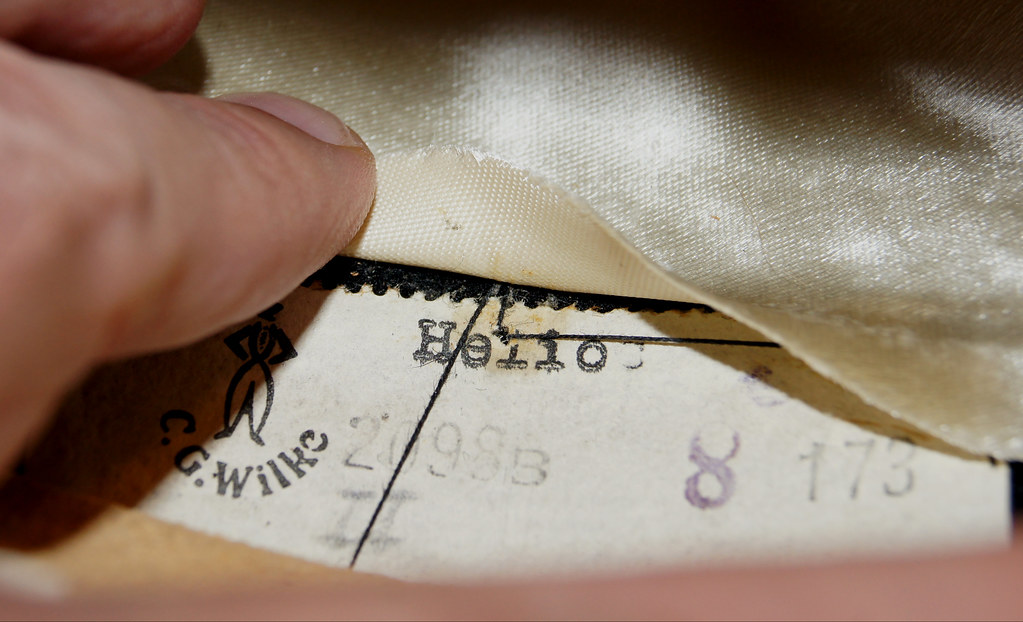
- Messages
- 17,639
- Location
- Maryland
Stefan, Thanks! By the way I was told by Bahner Hat Machines that Gubener Hüte GmbH machinery ended up in China (can't remember the factory name) and is in terrible condition.Very interesting information, Steve. Thanks.
- Messages
- 17,639
- Location
- Maryland
Stefan, Thanks!Beautiful hat, Steve. That stylish liner really does shine.
- Messages
- 17,639
- Location
- Maryland
The following is a translated footnote from "Chapeau, Das Westalgäu behütet die Welt, Die Geschichte der Hutprodukrion in Lindenberg und Umgebung, 2015" (This is a great book that I purchased at the Deutsches Hut Museum Lindenberg). Interesting tidbit at the end regarding Ottmar Reich and the "Hückel" trademark for Germany.
"The "J. Hückel's Sons k. u. k. Hof-Hutfabrikanten in Neutitschein - Vienna ", founded in 1799, produced around 5,000 felt hats daily with around 2,000 employees in 1913. After the First World War, the old cloth and hatmaker town of Neutitschein (municipal law since 1313) became part of Czechoslovakia, today this is the city of Nova Jicin the Czech Republic, where exports to Germany, England and the USA accounted for up to 70 percent of the production, while at the end of the 1930s the company was at three locations (Neutitschein, Ratibor and Skoczow, Poland) with 3,000 employees and was one of the most important hat factories in Europe. After the Second World War, all three works were expropriated.The great-grandsons of Johann Hückel, Fritz and Peter Hückel, 1946 moved to Weilheim / Obb (Bavaria, West Germany) , here was the company with the Hückel naming rights for Germany until 1975. Back then it was discussed in the company Ottmar Reich, whether the name rights "Hückel" should take over the production of an exclusive men's hat series, but that did not happen (message contemporary witness Hugo Kirchmann, 2014)."
"Chapeau, Das Westalgäu behütet die Welt, Die Geschichte der Hutprodukrion in Lindenberg und Umgebung, 2015"
"The "J. Hückel's Sons k. u. k. Hof-Hutfabrikanten in Neutitschein - Vienna ", founded in 1799, produced around 5,000 felt hats daily with around 2,000 employees in 1913. After the First World War, the old cloth and hatmaker town of Neutitschein (municipal law since 1313) became part of Czechoslovakia, today this is the city of Nova Jicin the Czech Republic, where exports to Germany, England and the USA accounted for up to 70 percent of the production, while at the end of the 1930s the company was at three locations (Neutitschein, Ratibor and Skoczow, Poland) with 3,000 employees and was one of the most important hat factories in Europe. After the Second World War, all three works were expropriated.The great-grandsons of Johann Hückel, Fritz and Peter Hückel, 1946 moved to Weilheim / Obb (Bavaria, West Germany) , here was the company with the Hückel naming rights for Germany until 1975. Back then it was discussed in the company Ottmar Reich, whether the name rights "Hückel" should take over the production of an exclusive men's hat series, but that did not happen (message contemporary witness Hugo Kirchmann, 2014)."
"Chapeau, Das Westalgäu behütet die Welt, Die Geschichte der Hutprodukrion in Lindenberg und Umgebung, 2015"
- Messages
- 17,639
- Location
- Maryland
A. Peschel Dinkelsbühl "Bella", 57cm probably mid to later 1960s.
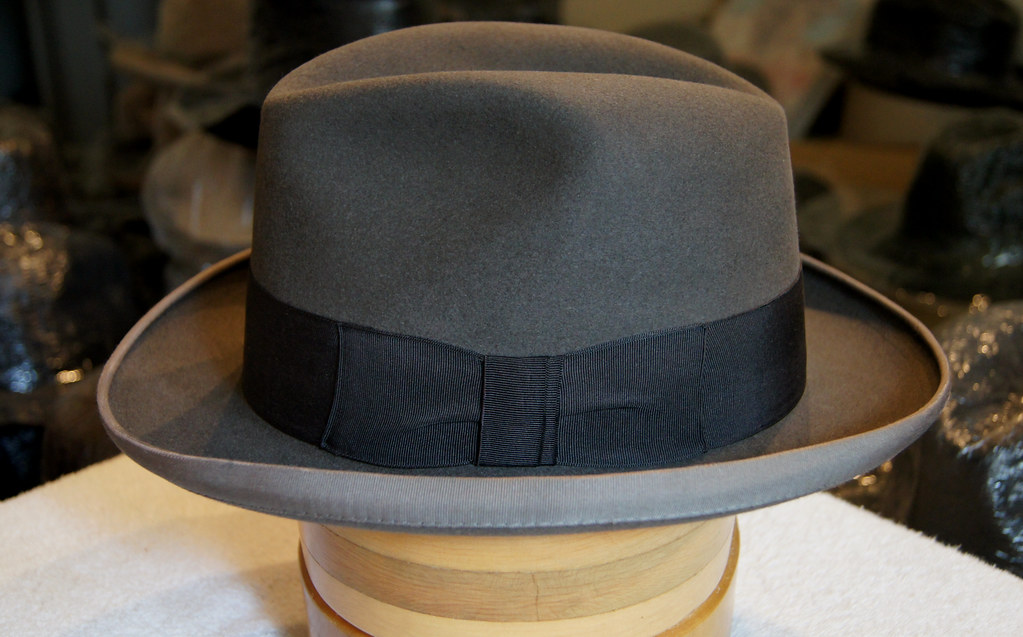
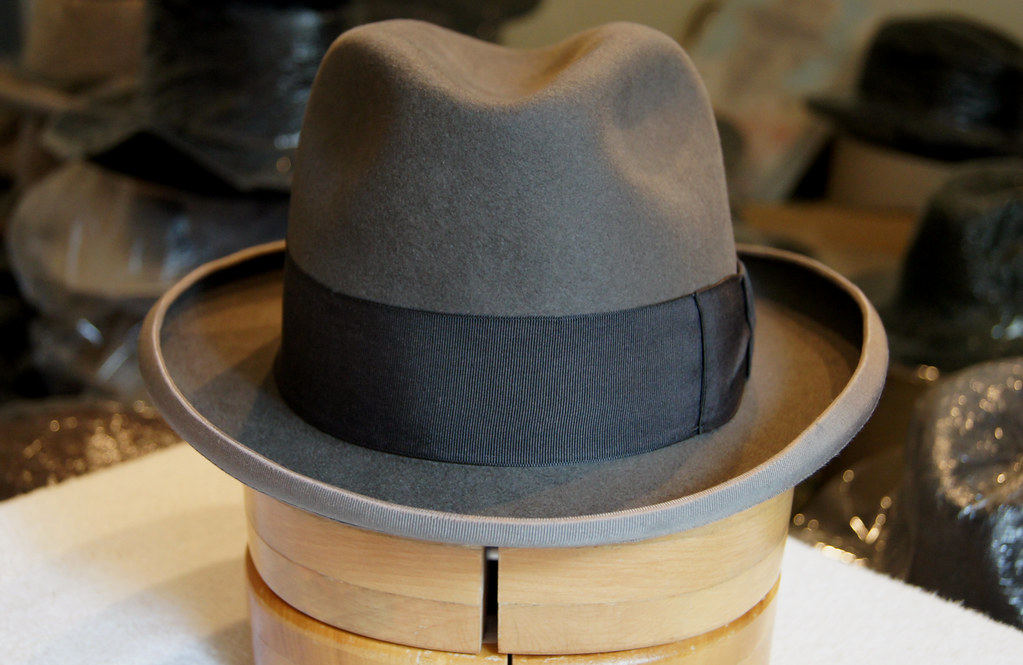
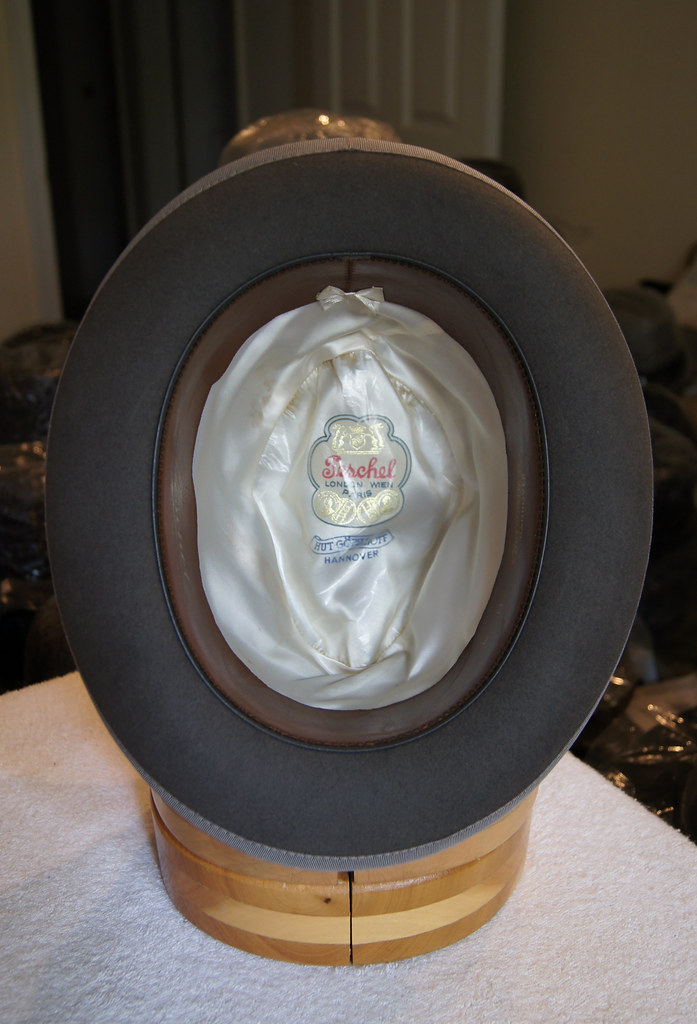
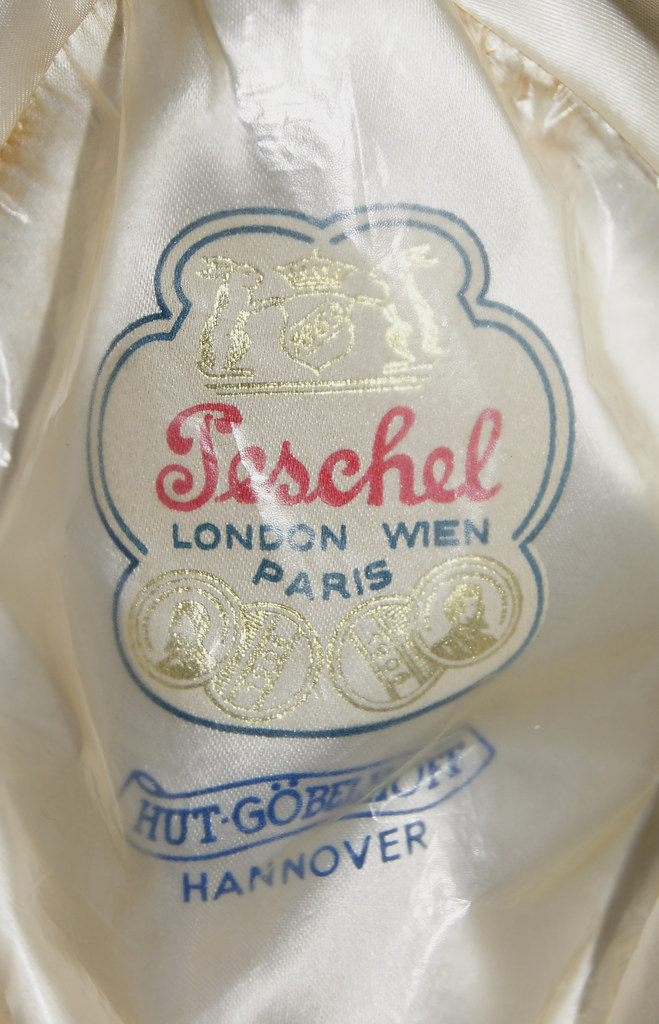
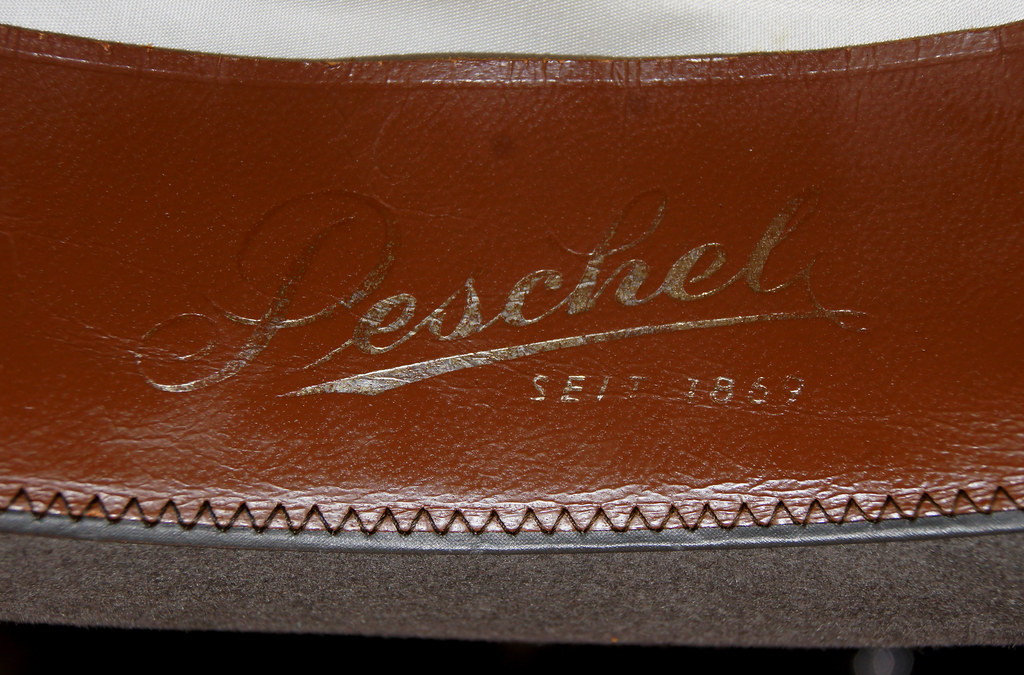
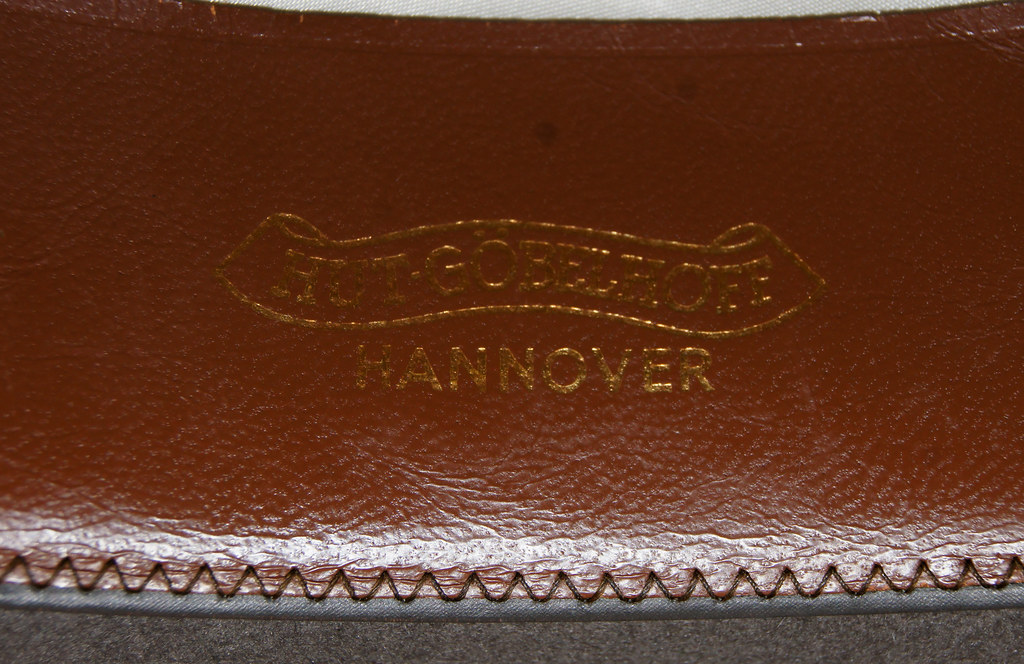
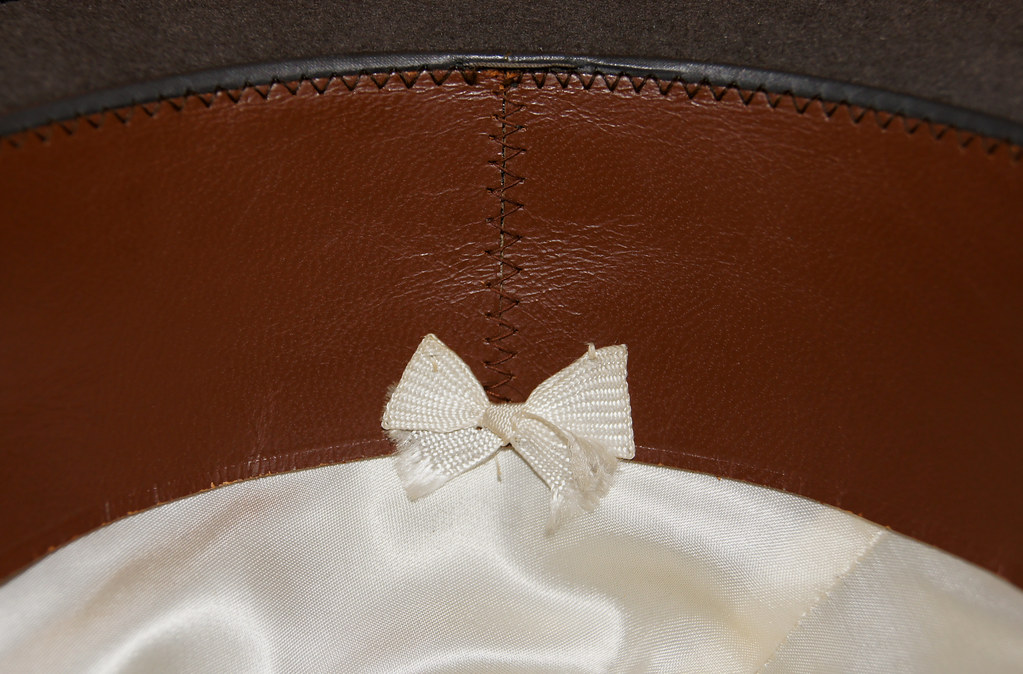
Natural Light
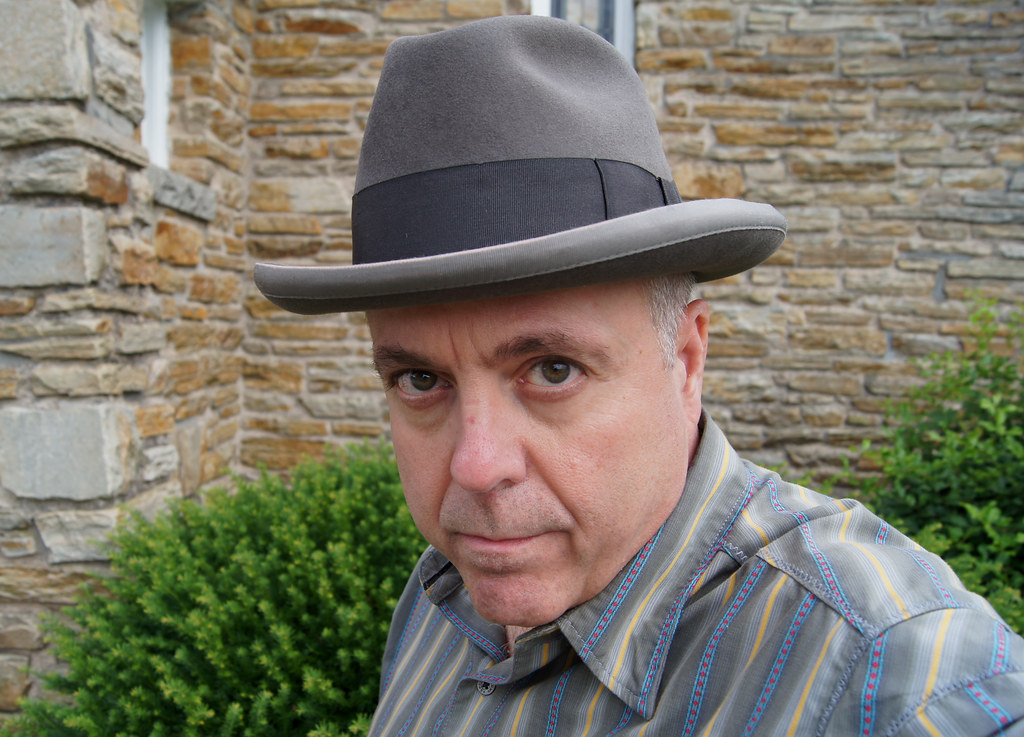
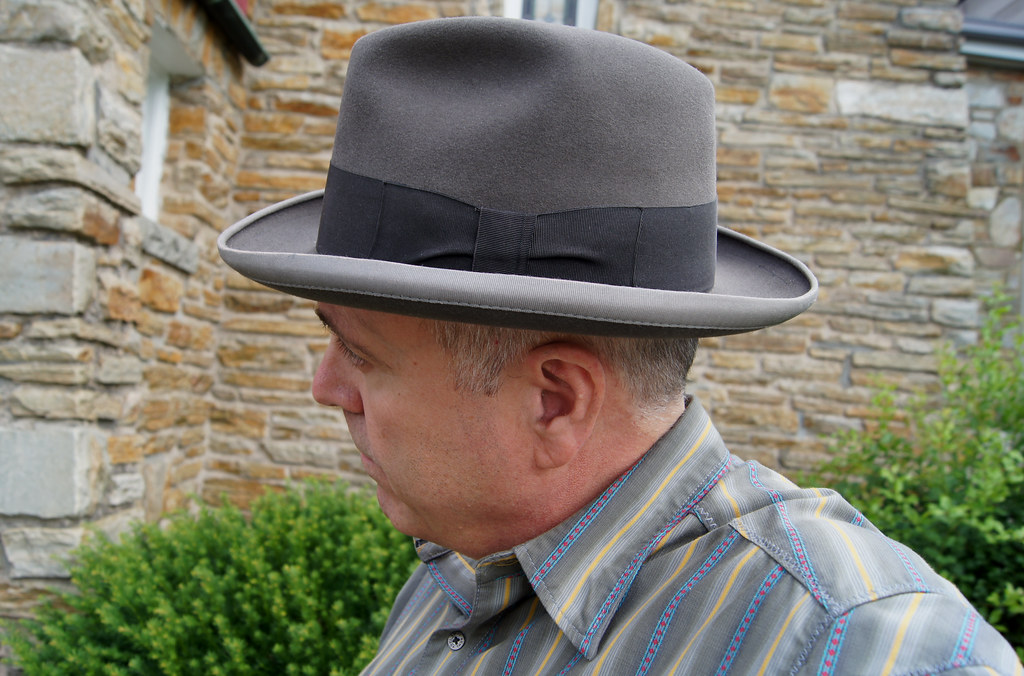







Natural Light


- Messages
- 17,639
- Location
- Maryland
The following is a translated from "Chapeau, Das Westalgäu behütet die Welt, Die Geschichte der Hutprodukrion in Lindenberg und Umgebung, 2015" (This is a great book that I purchased at the Deutsches Hut Museum Lindenberg).
The following section discusses Post WWII Felt Hat and Felt Hood production for Lindenberg Hat Companies: Masyer Milz, Ottmar Reich and Aurel Huber. There is some very interesting new information presented here especially the transfer of Felt Stump / Hood production from Mayser Ulm (Felt Stump Factory destroyed) to Masyer Milz (until 1971) and the use of expelled J. Hückel and Sons workers at Aurel Huber (and most likely at Mayser Milz and Ottmar Reich).
28. Deutsche / German Mark and Economic Miracles
The introduction of the Deutsche / German Mark in the three western occupation zones of Germany took place with the currency reform on 20 June 1948. Four days later, on 24 June 1948, there was also in the Soviet occupation zone to a monetary reform, together with the The separate economic reforms of West Berlin, the so-called "Berlin Blokade" 271. The separate reforms promoted the de facto West-East division of Germany, which led to the founding of two German states in 1949. The Federal Republic of Germany and the Germans emerged Democratic Republic (GDR).
In the newly created Federal Republic of Germany, the time of the so-called "economic miracle", personified by the Minister of Economics Ludwig Erhard, began, and the West-Allgäu hat industry also participated strongly in the 1950s and 1960s and predefined their ability to export until the end of 1969 Lindenberg was now able to develop into a center of the German hat industry with stronger felt hat production, partly because the competition in the other part of Germany did not have a good start in the post-war period. Guben on the Lusatian Neisse (a river) in Brandenburg was probably the most important German production center of the felt hat industry before the war. After the war, Guben, now divided into a German and a Polish section, remained only the limited market of the GDR and its friends "Brother countries" of Eastern Europe. With DDR dumping prices starting from the middle of the 1960s the Gubener felt hat industry became in individual market segments a disagreeable competitor of the Westallgauer felt hat industry.
After the currency reform, the complicated management regulations in the French occupation zone were abolished. Already in the second half of 1948, the number of hats manufactured in West Allgaeu more than doubled compared to the same period of the previous year. "With the release of the price, markets were again created on which supply and demand produced a realistic price structure With a fixed exchange rate against the US dollar, companies could again capitalize their investments without worrying about the monetary value.
Investment in Production of Felt
In Lindenberg, from the currency reform of 1948 onwards, investments were made mainly in felt hat production and in a separate production of felt stumps. As early as 1946/1947, the company Mayser-Milz & Cie. with their outsourced machines from Ulm to build a hair felts stump production in Lindenberg. The factory in Ulm had been bombed out in 1945. At the company premises in Lindenberg, construction was also undertaken after the currency reform in 1948. In 1948/1949, the 150-meter-long workshop for stump production ("Walkerei / Fulling") was built parallel to the railway body. (On November 10, 1971, the last hat-stump by Mayser-Milz was manufactured in the Lindenberg plant, after which the company moved the hat-stump production back to their factory in Ulm.) In 1950, an extension to the hat production on the Bismarckstraße followed and a 5 story new factory building on the Nadenbergstraße in 1958. The construction of 1958 was completed in 1999, just over 40 years later, with a high-level factory building with a high-bay warehouse Raw materials and finished goods extended.This extension was no longer used for the expansion of production, but for the rationalization of the production process.Thus, the production areas of women's and men's hat were combined and brought to the same level as the fabric hat department.
The company Aurel Huber began in 1948/1949 with its own Felt Stumpen/Hood production. After the end of the war, it was cut off from its former source of supply in the former East of Germany (for example, Ratibor in Silesia) and was now planning its own crude factory in Lindenberg. Unlike the company Mayser-Milz, however, had no own production experience in this field. It compensated for this by recruiting Sudeten-German hat specialists, who had been expelled from Czechoslovakia in 1945. These specialists came from the hat city of Neutitschein in the "Kuhländchen" via the English and American occupation zones, and as early as mid-1946 Huber had obtained permission from the district president and the French governor in Lindau to recruit relevant hat specialists outside the French occupation zone A general freedom of movement between the western zones of occupation had not yet been agreed upon: it was in particular Rudolf Holub (1897-1970), a former executive employee of the hat factory Johann Huckel in Neutitschein, who took over the construction work of a hair-felt hat-stump production at Aurel Huber and In addition, other former specialists from Neutitschein brought to Lindenberg. From 1948, Huber commissioned residential buildings on Sedanstrasse, later to be built on the Spielermoos site, for these employees.
End of 1948 / early 1949, the hair felts production of the company Aurel Huber went into operation. This raw material also included its own dyeing plant. Here Johann Beier, also from the company Hückel in Neutitschein, had done the set-up work, later he led the entire raw material of the company. On the company premises modern shedhallenve and a new boiler house for steam generation were built for the raw production. The new chimney was probably for reasons of prestige a bit higher than the previously highest fireplace in Lindenberg at the company Ottmar Reich. Also for the hat production itself the factory was extended by new buildings. Most recently in 1950, the connection building with turrets and 1952 a production building in the interior of the factory area.
The Ottmar Reich company had acquired the hat factory Brüder Böhm in 1938 as a branch plant in Vienna and was able to source their felt stumps there. After the aryanized company was "returned duly" after the end of the war, it no longer had its own hat stump production. From 1949, the Bavarian Wool Felt factories K.G. (BWF) in Offingen / Danube became one of the main suppliers. This company had many years of experience in the felt cloth production and began in 1949 with the production of Hat Stumps, possibly already in development cooperation with the company Reich. The hat factory Ottmar Reich had thus set a substantial part on the production of Wool Felt Hats. It was said that the Mayser Fur Felt Men's Hat was the "Mercedes Class", the Reich Wool Felt Hat the (cheaper) "Opel Class". What this does not mean is the "Opel Class" could not make good money at that time.
Ottmar Reich's Fur and Velour Hat Stumps were manufactured by Miesbach Obb company Kohlndorfer. Ottmar Reich then renamed it as an independent Hat Stump manufacturing plant. Hat Stumps were also purchased from foreign manufacturers, in addition to the Ebreichsdorfer Felt Hat Factory / S.J Fraenkel AG in Austria, from large manufacturers in Monza (Italy). In addition, new factory buildings were built on the factory site of the hat factory Ottmar Reich. A large extension, added 1961-1963 to the today monument-protected "Manz" industrial building, reached along the sunny road until almost the Glasbühlstraße.
From "Chapeau, Das Westalgäu behütet die Welt, Die Geschichte der Hutprodukrion in Lindenberg und Umgebung, 2015"
The following section discusses Post WWII Felt Hat and Felt Hood production for Lindenberg Hat Companies: Masyer Milz, Ottmar Reich and Aurel Huber. There is some very interesting new information presented here especially the transfer of Felt Stump / Hood production from Mayser Ulm (Felt Stump Factory destroyed) to Masyer Milz (until 1971) and the use of expelled J. Hückel and Sons workers at Aurel Huber (and most likely at Mayser Milz and Ottmar Reich).
28. Deutsche / German Mark and Economic Miracles
The introduction of the Deutsche / German Mark in the three western occupation zones of Germany took place with the currency reform on 20 June 1948. Four days later, on 24 June 1948, there was also in the Soviet occupation zone to a monetary reform, together with the The separate economic reforms of West Berlin, the so-called "Berlin Blokade" 271. The separate reforms promoted the de facto West-East division of Germany, which led to the founding of two German states in 1949. The Federal Republic of Germany and the Germans emerged Democratic Republic (GDR).
In the newly created Federal Republic of Germany, the time of the so-called "economic miracle", personified by the Minister of Economics Ludwig Erhard, began, and the West-Allgäu hat industry also participated strongly in the 1950s and 1960s and predefined their ability to export until the end of 1969 Lindenberg was now able to develop into a center of the German hat industry with stronger felt hat production, partly because the competition in the other part of Germany did not have a good start in the post-war period. Guben on the Lusatian Neisse (a river) in Brandenburg was probably the most important German production center of the felt hat industry before the war. After the war, Guben, now divided into a German and a Polish section, remained only the limited market of the GDR and its friends "Brother countries" of Eastern Europe. With DDR dumping prices starting from the middle of the 1960s the Gubener felt hat industry became in individual market segments a disagreeable competitor of the Westallgauer felt hat industry.
After the currency reform, the complicated management regulations in the French occupation zone were abolished. Already in the second half of 1948, the number of hats manufactured in West Allgaeu more than doubled compared to the same period of the previous year. "With the release of the price, markets were again created on which supply and demand produced a realistic price structure With a fixed exchange rate against the US dollar, companies could again capitalize their investments without worrying about the monetary value.
Investment in Production of Felt
In Lindenberg, from the currency reform of 1948 onwards, investments were made mainly in felt hat production and in a separate production of felt stumps. As early as 1946/1947, the company Mayser-Milz & Cie. with their outsourced machines from Ulm to build a hair felts stump production in Lindenberg. The factory in Ulm had been bombed out in 1945. At the company premises in Lindenberg, construction was also undertaken after the currency reform in 1948. In 1948/1949, the 150-meter-long workshop for stump production ("Walkerei / Fulling") was built parallel to the railway body. (On November 10, 1971, the last hat-stump by Mayser-Milz was manufactured in the Lindenberg plant, after which the company moved the hat-stump production back to their factory in Ulm.) In 1950, an extension to the hat production on the Bismarckstraße followed and a 5 story new factory building on the Nadenbergstraße in 1958. The construction of 1958 was completed in 1999, just over 40 years later, with a high-level factory building with a high-bay warehouse Raw materials and finished goods extended.This extension was no longer used for the expansion of production, but for the rationalization of the production process.Thus, the production areas of women's and men's hat were combined and brought to the same level as the fabric hat department.
The company Aurel Huber began in 1948/1949 with its own Felt Stumpen/Hood production. After the end of the war, it was cut off from its former source of supply in the former East of Germany (for example, Ratibor in Silesia) and was now planning its own crude factory in Lindenberg. Unlike the company Mayser-Milz, however, had no own production experience in this field. It compensated for this by recruiting Sudeten-German hat specialists, who had been expelled from Czechoslovakia in 1945. These specialists came from the hat city of Neutitschein in the "Kuhländchen" via the English and American occupation zones, and as early as mid-1946 Huber had obtained permission from the district president and the French governor in Lindau to recruit relevant hat specialists outside the French occupation zone A general freedom of movement between the western zones of occupation had not yet been agreed upon: it was in particular Rudolf Holub (1897-1970), a former executive employee of the hat factory Johann Huckel in Neutitschein, who took over the construction work of a hair-felt hat-stump production at Aurel Huber and In addition, other former specialists from Neutitschein brought to Lindenberg. From 1948, Huber commissioned residential buildings on Sedanstrasse, later to be built on the Spielermoos site, for these employees.
End of 1948 / early 1949, the hair felts production of the company Aurel Huber went into operation. This raw material also included its own dyeing plant. Here Johann Beier, also from the company Hückel in Neutitschein, had done the set-up work, later he led the entire raw material of the company. On the company premises modern shedhallenve and a new boiler house for steam generation were built for the raw production. The new chimney was probably for reasons of prestige a bit higher than the previously highest fireplace in Lindenberg at the company Ottmar Reich. Also for the hat production itself the factory was extended by new buildings. Most recently in 1950, the connection building with turrets and 1952 a production building in the interior of the factory area.
The Ottmar Reich company had acquired the hat factory Brüder Böhm in 1938 as a branch plant in Vienna and was able to source their felt stumps there. After the aryanized company was "returned duly" after the end of the war, it no longer had its own hat stump production. From 1949, the Bavarian Wool Felt factories K.G. (BWF) in Offingen / Danube became one of the main suppliers. This company had many years of experience in the felt cloth production and began in 1949 with the production of Hat Stumps, possibly already in development cooperation with the company Reich. The hat factory Ottmar Reich had thus set a substantial part on the production of Wool Felt Hats. It was said that the Mayser Fur Felt Men's Hat was the "Mercedes Class", the Reich Wool Felt Hat the (cheaper) "Opel Class". What this does not mean is the "Opel Class" could not make good money at that time.
Ottmar Reich's Fur and Velour Hat Stumps were manufactured by Miesbach Obb company Kohlndorfer. Ottmar Reich then renamed it as an independent Hat Stump manufacturing plant. Hat Stumps were also purchased from foreign manufacturers, in addition to the Ebreichsdorfer Felt Hat Factory / S.J Fraenkel AG in Austria, from large manufacturers in Monza (Italy). In addition, new factory buildings were built on the factory site of the hat factory Ottmar Reich. A large extension, added 1961-1963 to the today monument-protected "Manz" industrial building, reached along the sunny road until almost the Glasbühlstraße.
From "Chapeau, Das Westalgäu behütet die Welt, Die Geschichte der Hutprodukrion in Lindenberg und Umgebung, 2015"
Last edited:
- Messages
- 17,639
- Location
- Maryland
I was doing some online searching and discovered there was explosion at one the A. Peschel Villas in Šenov near Nový Jičín, Czech Republic back in 2015. Turns out it was insurance fraud gone wrong. Two bodies were found in the debris.
"The explosion of the villa, inside the corpse."
https://translate.google.com/translate?sl=cs&tl=en&js=y&prev=_t&hl=en&ie=UTF-8&u=https://ostrava.idnes.cz/policiste-rok-od-vybuchu-v-senovske-vile-stale-neukoncili-vysetrovani-13q-/ostrava-zpravy.aspx?c=A160113_2218147_ostrava-zpravy_woj&edit-text=&act=url
I took photos of the two A.Peschel Villas when I visited back in April 2011. The A. Peschel factory buildings were being demolished at that time to make room for a retail mall.
This is the villa where the explosion took place (in the basement).
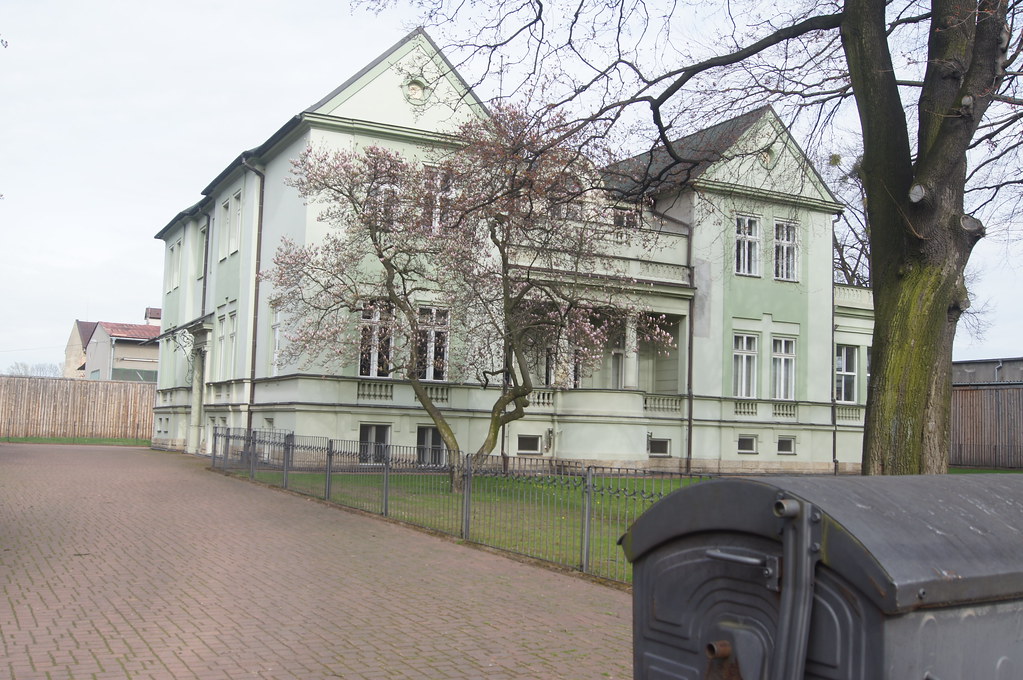
This is the second villa which is next door.
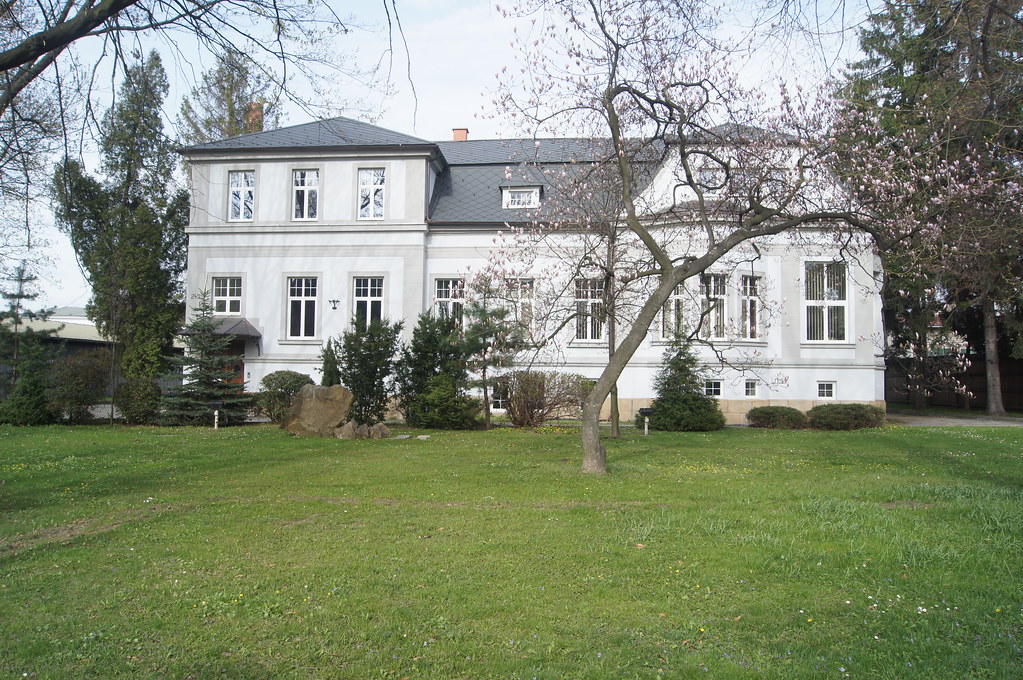
http://germanaustrianhats.invisionzone.com/index.php?/topic/8-peschel-hutfabrik/page-2#entry954
You can see there were major alterations made from their heyday.
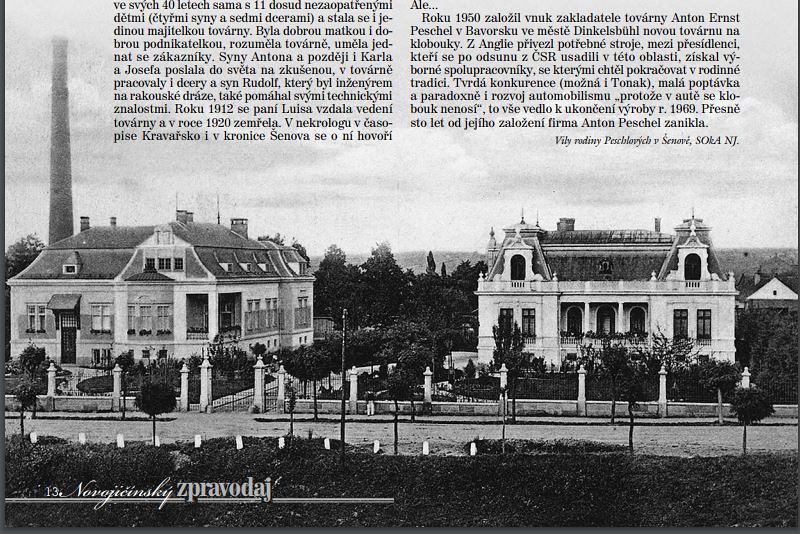
Behind the forgotten glory of Peschel's hat factory and Peschel's villas
g Under this name, the Language and Education Center has prepared
on Tyrsova Street in Nový Jičín visit places that are not
so famous as Hückel's villa and Hückel's hat factory,
but they are very interesting. The building plots that Anton
Peschel and his companion Jan Popp bought at
the territory of Schönau(today Šenov), were originally the property of the Gothic estate.
And Anton Peschel, the owner of the mill, decided in
1869 to build a hat factory. From the old chronicle of Schönau - Neutitshein (today Šenov u Nového Jičína)
and other documents show that after initial difficulties with
the factory it began to grow and its products got
popularity both at home and abroad. Only when we stood in the courtyard
today's demolition building, we realized it
scope and entrepreneurship with which the family expanded the factory;
bought the liquor of Simon Adler and rebuilt it to the butcher
and a pub with renowned cuisine, the garden restaurant was also known,
built a hairdresser, dye, sawmill, used Grasmanka's water, which was so pure that it was possible to bathe in it. Already in 1913 they asked for permission to build a train siding, purchased
and let the old house colony over
Grasmanka, who previously served mainly cattle,
and built apartments for employees. They lived in them even after
World War II. In the courtyard you can see the remaining factory buildings,
waiting for demolition, but also clerical flats or wooden ones
porches of residential buildings. Production stopped here on 1 February 1949
and the object was taken over by the Ministry of National Defense, today it belongs
Schönau's.
And what about Peschel's villas? Both of the main representative Peschel villas
there are more than a hundred ladies and their appearance several times
changed, as illustrated by period drawings and photographs. Are placed
in the gardens at the main road to Schönau - Neutitshein, so everyone is here
can also be seen from the outside. And at the older one with a beautiful loggia, which
is referred to as Anton Peschel Villa (jr.), we have nothing else
it was not private - it was private property and we were not invited.
We at least gathered at the gate as we remembered beautiful spaces
from the time when the school canteen and school were here,
while the gate was silently letting go of the cars and the basement
white dressed figures.
But the second villa, called Karel Peschel's villa, today
The municipal office in Šenov near Nový Jičín (Schönau - Neutitshein) was a delicacy.
We were expected and it was what to watch. Entrance door, marble
staircase, hall lined with wood, fireplace from 1921, wooden
stairs with beautiful handrails, wardrobes built in
wall, beautiful wood clad meeting room, former
a winter garden and many other today's official rooms,
in which the original furniture, doors,
floors, all well maintained, and upholstered benches in the hall,
which encouraged us to sit down and listen to something about a woman,
which initially stood in the background, but eventually became a soul and momentum
the lever of the entire factory and even Honorable Citizen Schönau - Neutitshein.
It was Luisa Peschel, who was born in Doubravice in 1845
above Svitavy and as Aloisia Kolloros came with her parents
in 1864 to New Jičín, where her father Mathias worked
in the city brewery. Already in the following year she married
Anton Peschel (born 1824). Although it is initially related to her
He did not talk much about starting the factory, she certainly was
she was well acquainted with her operations and helped her husband.
In 1885, her husband Anton died and Luisa Peschlová remained
at her 40s alone, with 11 still unpaid
children (four sons and seven daughters) and became the only one
the factory owner. She was good mother and good
a businesswoman, she understood the factory, she could act
with customers. Son of Anton and later Charles
and she sent Joseph to the world at an experienced, at a factory
the daughters and son Rudolph worked as an engineer
on the Austrian runway, he also helped his technical ones
knowledge. In 1912, Mrs Luisa gave up her leadership
factory and died in 1920. The obituary in the magazine
Kravařsko and in the chronicle of Schönau - Neutitshein is referred to as a woman who had a good heart and a generous hand, where there was an emergency, contributed to both the school and the church. She was buried in the family tomb in Schönau - Neutitshein.
We went to another villa over Grasmanka, where we went to the hill
above the track stands the villa from 1925. It belonged to Anton Ernst Peschel
(1899), the founder of the company's founder, and in the shield he has a naked man
and a frog. This modern villa has unfortunately gone through both external and internal
modifications, and another building was added to it
- a hypermodern cube, so Siamese twins were born.
There was a training center, red corner, jesloškolka, apprentice
center. Nowadays, the extension is quite due to the municipal office
nicely adapted for pensioners and the original building is private
property. This time we were expected by the owner
and at least part of the villa we could see, look
to the plans of the original building, to get an idea of the time
modern living - large rooms, winter garden, spiral
staircases, built-in wardrobes with hidden doors, but also a terrace,
bower, garden with stone walls. Everywhere is visible
the owner's desire to preserve as much as possible the beauty of this villa.
It was getting darker when we said goodbye to the landlord and went through
On Vyhlídce housing estate - there was another villa. She wanted her here
to build sister Anthony Ernst dr. Johanna Steinbach
his husband Fritz, the factory manager. But it started
World War II and the plans remained only a stone garden
wall on Anenské street.
And in Anenské we are standing in front of the illuminated other villa, which
originally belonged to factory Weiss. It was romantic
the chateaux of the Loire with its towers, a decorated shield, chimneys,
windows and terraces decorated with grilles, a beautiful entrance gate
and the arbor. Peschel's family owned it until 1945, then
here were flats and finally underwent a rebuilding that completely changed
its appearance and adapted it to the needs of kindergarten.
Beautiful large rooms filled with toys, tables and beds
no longer resemble luxurious living, they breathe
love for children. Thanks to the lady schoolgirl we could go through
also interesting vaulted cellars and on the evening terrace to chat,
what it was like when Peschel came here for a war with a carriage
drawn horses, as remembers from nearby.
Where was the time? Peschels were Germans, their factory
worked for the German army. Already in April 1945 they moved away
mostly to Germany, their property was nationalized.
But...
In 1950, he founded the founder of the factory, Anton Ernst
Peschel in Bavaria in the city of Dinkelsbühl new factory on
hats. From England he brought the necessary machines, among the displaced,
who, after leaving Czechoslovakia, settled in this area, got excellent
co-workers he wanted to continue with in the family
tradition. Hard competition (maybe even Tonak), low demand
and paradoxically the development of automobile "because in the car with a hat
does not bear ", all led to the end of production in 1969. Exactly
One hundred years since its inception, Anton Peschel has disappeared. (Typical Czech propaganda)
Villas of Peschlov family in Šenov, SOkA NJ.
"The explosion of the villa, inside the corpse."
https://translate.google.com/translate?sl=cs&tl=en&js=y&prev=_t&hl=en&ie=UTF-8&u=https://ostrava.idnes.cz/policiste-rok-od-vybuchu-v-senovske-vile-stale-neukoncili-vysetrovani-13q-/ostrava-zpravy.aspx?c=A160113_2218147_ostrava-zpravy_woj&edit-text=&act=url
I took photos of the two A.Peschel Villas when I visited back in April 2011. The A. Peschel factory buildings were being demolished at that time to make room for a retail mall.
This is the villa where the explosion took place (in the basement).

This is the second villa which is next door.

http://germanaustrianhats.invisionzone.com/index.php?/topic/8-peschel-hutfabrik/page-2#entry954
You can see there were major alterations made from their heyday.

Behind the forgotten glory of Peschel's hat factory and Peschel's villas
g Under this name, the Language and Education Center has prepared
on Tyrsova Street in Nový Jičín visit places that are not
so famous as Hückel's villa and Hückel's hat factory,
but they are very interesting. The building plots that Anton
Peschel and his companion Jan Popp bought at
the territory of Schönau(today Šenov), were originally the property of the Gothic estate.
And Anton Peschel, the owner of the mill, decided in
1869 to build a hat factory. From the old chronicle of Schönau - Neutitshein (today Šenov u Nového Jičína)
and other documents show that after initial difficulties with
the factory it began to grow and its products got
popularity both at home and abroad. Only when we stood in the courtyard
today's demolition building, we realized it
scope and entrepreneurship with which the family expanded the factory;
bought the liquor of Simon Adler and rebuilt it to the butcher
and a pub with renowned cuisine, the garden restaurant was also known,
built a hairdresser, dye, sawmill, used Grasmanka's water, which was so pure that it was possible to bathe in it. Already in 1913 they asked for permission to build a train siding, purchased
and let the old house colony over
Grasmanka, who previously served mainly cattle,
and built apartments for employees. They lived in them even after
World War II. In the courtyard you can see the remaining factory buildings,
waiting for demolition, but also clerical flats or wooden ones
porches of residential buildings. Production stopped here on 1 February 1949
and the object was taken over by the Ministry of National Defense, today it belongs
Schönau's.
And what about Peschel's villas? Both of the main representative Peschel villas
there are more than a hundred ladies and their appearance several times
changed, as illustrated by period drawings and photographs. Are placed
in the gardens at the main road to Schönau - Neutitshein, so everyone is here
can also be seen from the outside. And at the older one with a beautiful loggia, which
is referred to as Anton Peschel Villa (jr.), we have nothing else
it was not private - it was private property and we were not invited.
We at least gathered at the gate as we remembered beautiful spaces
from the time when the school canteen and school were here,
while the gate was silently letting go of the cars and the basement
white dressed figures.
But the second villa, called Karel Peschel's villa, today
The municipal office in Šenov near Nový Jičín (Schönau - Neutitshein) was a delicacy.
We were expected and it was what to watch. Entrance door, marble
staircase, hall lined with wood, fireplace from 1921, wooden
stairs with beautiful handrails, wardrobes built in
wall, beautiful wood clad meeting room, former
a winter garden and many other today's official rooms,
in which the original furniture, doors,
floors, all well maintained, and upholstered benches in the hall,
which encouraged us to sit down and listen to something about a woman,
which initially stood in the background, but eventually became a soul and momentum
the lever of the entire factory and even Honorable Citizen Schönau - Neutitshein.
It was Luisa Peschel, who was born in Doubravice in 1845
above Svitavy and as Aloisia Kolloros came with her parents
in 1864 to New Jičín, where her father Mathias worked
in the city brewery. Already in the following year she married
Anton Peschel (born 1824). Although it is initially related to her
He did not talk much about starting the factory, she certainly was
she was well acquainted with her operations and helped her husband.
In 1885, her husband Anton died and Luisa Peschlová remained
at her 40s alone, with 11 still unpaid
children (four sons and seven daughters) and became the only one
the factory owner. She was good mother and good
a businesswoman, she understood the factory, she could act
with customers. Son of Anton and later Charles
and she sent Joseph to the world at an experienced, at a factory
the daughters and son Rudolph worked as an engineer
on the Austrian runway, he also helped his technical ones
knowledge. In 1912, Mrs Luisa gave up her leadership
factory and died in 1920. The obituary in the magazine
Kravařsko and in the chronicle of Schönau - Neutitshein is referred to as a woman who had a good heart and a generous hand, where there was an emergency, contributed to both the school and the church. She was buried in the family tomb in Schönau - Neutitshein.
We went to another villa over Grasmanka, where we went to the hill
above the track stands the villa from 1925. It belonged to Anton Ernst Peschel
(1899), the founder of the company's founder, and in the shield he has a naked man
and a frog. This modern villa has unfortunately gone through both external and internal
modifications, and another building was added to it
- a hypermodern cube, so Siamese twins were born.
There was a training center, red corner, jesloškolka, apprentice
center. Nowadays, the extension is quite due to the municipal office
nicely adapted for pensioners and the original building is private
property. This time we were expected by the owner
and at least part of the villa we could see, look
to the plans of the original building, to get an idea of the time
modern living - large rooms, winter garden, spiral
staircases, built-in wardrobes with hidden doors, but also a terrace,
bower, garden with stone walls. Everywhere is visible
the owner's desire to preserve as much as possible the beauty of this villa.
It was getting darker when we said goodbye to the landlord and went through
On Vyhlídce housing estate - there was another villa. She wanted her here
to build sister Anthony Ernst dr. Johanna Steinbach
his husband Fritz, the factory manager. But it started
World War II and the plans remained only a stone garden
wall on Anenské street.
And in Anenské we are standing in front of the illuminated other villa, which
originally belonged to factory Weiss. It was romantic
the chateaux of the Loire with its towers, a decorated shield, chimneys,
windows and terraces decorated with grilles, a beautiful entrance gate
and the arbor. Peschel's family owned it until 1945, then
here were flats and finally underwent a rebuilding that completely changed
its appearance and adapted it to the needs of kindergarten.
Beautiful large rooms filled with toys, tables and beds
no longer resemble luxurious living, they breathe
love for children. Thanks to the lady schoolgirl we could go through
also interesting vaulted cellars and on the evening terrace to chat,
what it was like when Peschel came here for a war with a carriage
drawn horses, as remembers from nearby.
Where was the time? Peschels were Germans, their factory
worked for the German army. Already in April 1945 they moved away
mostly to Germany, their property was nationalized.
But...
In 1950, he founded the founder of the factory, Anton Ernst
Peschel in Bavaria in the city of Dinkelsbühl new factory on
hats. From England he brought the necessary machines, among the displaced,
who, after leaving Czechoslovakia, settled in this area, got excellent
co-workers he wanted to continue with in the family
tradition. Hard competition (maybe even Tonak), low demand
and paradoxically the development of automobile "because in the car with a hat
does not bear ", all led to the end of production in 1969. Exactly
One hundred years since its inception, Anton Peschel has disappeared. (Typical Czech propaganda)
Villas of Peschlov family in Šenov, SOkA NJ.
Last edited:
Interesting,thanks.I was doing some online searching and discovered there was explosion at one the A. Peschel Villas in Šenov near Nový Jičín, Czech Republic back in 2015. Turns out it was insurance fraud gone wrong. Two bodies were found in the debris.
"The explosion of the villa, inside the corpse."
https://translate.google.com/translate?sl=cs&tl=en&js=y&prev=_t&hl=en&ie=UTF-8&u=https://ostrava.idnes.cz/policiste-rok-od-vybuchu-v-senovske-vile-stale-neukoncili-vysetrovani-13q-/ostrava-zpravy.aspx?c=A160113_2218147_ostrava-zpravy_woj&edit-text=&act=url
I took photos of the two A.Peschel Villas when I visited back in April 2011. The A. Peschel factory buildings were being demolished at that time to make room for a retail mall.
This is the villa where the explosion took place (in the basement).

This is the second villa which is next door.

http://germanaustrianhats.invisionzone.com/index.php?/topic/8-peschel-hutfabrik/page-2#entry954
You can see there were major alterations made from their heyday.

Behind the forgotten glory of Peschel's hat factory and Peschel's villas
g Under this name, the Language and Education Center has prepared
on Tyrsova Street in Nový Jičín visit places that are not
so famous as Hückel's villa and Hückel's hat factory,
but they are very interesting. The building plots that Anton
Peschel and his companion Jan Popp bought at
the territory of Schönau(today Šenov), were originally the property of the Gothic estate.
And Anton Peschel, the owner of the mill, decided in
1869 to build a hat factory. From the old chronicle of Schönau - Neutitshein (today Šenov u Nového Jičína)
and other documents show that after initial difficulties with
the factory it began to grow and its products got
popularity both at home and abroad. Only when we stood in the courtyard
today's demolition building, we realized it
scope and entrepreneurship with which the family expanded the factory;
bought the liquor of Simon Adler and rebuilt it to the butcher
and a pub with renowned cuisine, the garden restaurant was also known,
built a hairdresser, dye, sawmill, used Grasmanka's water, which was so pure that it was possible to bathe in it. Already in 1913 they asked for permission to build a train siding, purchased
and let the old house colony over
Grasmanka, who previously served mainly cattle,
and built apartments for employees. They lived in them even after
World War II. In the courtyard you can see the remaining factory buildings,
waiting for demolition, but also clerical flats or wooden ones
porches of residential buildings. Production stopped here on 1 February 1949
and the object was taken over by the Ministry of National Defense, today it belongs
Schönau's.
And what about Peschel's villas? Both of the main representative Peschel villas
there are more than a hundred ladies and their appearance several times
changed, as illustrated by period drawings and photographs. Are placed
in the gardens at the main road to Schönau - Neutitshein, so everyone is here
can also be seen from the outside. And at the older one with a beautiful loggia, which
is referred to as Anton Peschel Villa (jr.), we have nothing else
it was not private - it was private property and we were not invited.
We at least gathered at the gate as we remembered beautiful spaces
from the time when the school canteen and school were here,
while the gate was silently letting go of the cars and the basement
white dressed figures.
But the second villa, called Karel Peschel's villa, today
The municipal office in Šenov near Nový Jičín (Schönau - Neutitshein) was a delicacy.
We were expected and it was what to watch. Entrance door, marble
staircase, hall lined with wood, fireplace from 1921, wooden
stairs with beautiful handrails, wardrobes built in
wall, beautiful wood clad meeting room, former
a winter garden and many other today's official rooms,
in which the original furniture, doors,
floors, all well maintained, and upholstered benches in the hall,
which encouraged us to sit down and listen to something about a woman,
which initially stood in the background, but eventually became a soul and momentum
the lever of the entire factory and even Honorable Citizen Schönau - Neutitshein.
It was Luisa Peschel, who was born in Doubravice in 1845
above Svitavy and as Aloisia Kolloros came with her parents
in 1864 to New Jičín, where her father Mathias worked
in the city brewery. Already in the following year she married
Anton Peschel (born 1824). Although it is initially related to her
He did not talk much about starting the factory, she certainly was
she was well acquainted with her operations and helped her husband.
In 1885, her husband Anton died and Luisa Peschlová remained
at her 40s alone, with 11 still unpaid
children (four sons and seven daughters) and became the only one
the factory owner. She was good mother and good
a businesswoman, she understood the factory, she could act
with customers. Son of Anton and later Charles
and she sent Joseph to the world at an experienced, at a factory
the daughters and son Rudolph worked as an engineer
on the Austrian runway, he also helped his technical ones
knowledge. In 1912, Mrs Luisa gave up her leadership
factory and died in 1920. The obituary in the magazine
Kravařsko and in the chronicle of Schönau - Neutitshein is referred to as a woman who had a good heart and a generous hand, where there was an emergency, contributed to both the school and the church. She was buried in the family tomb in Schönau - Neutitshein.
We went to another villa over Grasmanka, where we went to the hill
above the track stands the villa from 1925. It belonged to Anton Ernst Peschel
(1899), the founder of the company's founder, and in the shield he has a naked man
and a frog. This modern villa has unfortunately gone through both external and internal
modifications, and another building was added to it
- a hypermodern cube, so Siamese twins were born.
There was a training center, red corner, jesloškolka, apprentice
center. Nowadays, the extension is quite due to the municipal office
nicely adapted for pensioners and the original building is private
property. This time we were expected by the owner
and at least part of the villa we could see, look
to the plans of the original building, to get an idea of the time
modern living - large rooms, winter garden, spiral
staircases, built-in wardrobes with hidden doors, but also a terrace,
bower, garden with stone walls. Everywhere is visible
the owner's desire to preserve as much as possible the beauty of this villa.
It was getting darker when we said goodbye to the landlord and went through
On Vyhlídce housing estate - there was another villa. She wanted her here
to build sister Anthony Ernst dr. Johanna Steinbach
his husband Fritz, the factory manager. But it started
World War II and the plans remained only a stone garden
wall on Anenské street.
And in Anenské we are standing in front of the illuminated other villa, which
originally belonged to factory Weiss. It was romantic
the chateaux of the Loire with its towers, a decorated shield, chimneys,
windows and terraces decorated with grilles, a beautiful entrance gate
and the arbor. Peschel's family owned it until 1945, then
here were flats and finally underwent a rebuilding that completely changed
its appearance and adapted it to the needs of kindergarten.
Beautiful large rooms filled with toys, tables and beds
no longer resemble luxurious living, they breathe
love for children. Thanks to the lady schoolgirl we could go through
also interesting vaulted cellars and on the evening terrace to chat,
what it was like when Peschel came here for a war with a carriage
drawn horses, as remembers from nearby.
Where was the time? Peschels were Germans, their factory
worked for the German army. Already in April 1945 they moved away
mostly to Germany, their property was nationalized.
But...
In 1950, he founded the founder of the factory, Anton Ernst
Peschel in Bavaria in the city of Dinkelsbühl new factory on
hats. From England he brought the necessary machines, among the displaced,
who, after leaving Czechoslovakia, settled in this area, got excellent
co-workers he wanted to continue with in the family
tradition. Hard competition (maybe even Tonak), low demand
and paradoxically the development of automobile "because in the car with a hat
does not bear ", all led to the end of production in 1969. Exactly
One hundred years since its inception, Anton Peschel has disappeared. (Typical Czech propaganda)
Villas of Peschlov family in Šenov, SOkA NJ.
- Messages
- 17,639
- Location
- Maryland
Bob, Thanks! That post covered some ground. 
David Niles
New in Town
- Messages
- 41
- Location
- Ritzville
I have two German hats for everyday wear.




Sent from my iPad using Tapatalk




Sent from my iPad using Tapatalk
Last edited:
- Messages
- 17,639
- Location
- Maryland
Are there any paper labels behind the sweatbands? They are both more recent. Is there a liner crown patch in the 2nd one?
David Niles
New in Town
- Messages
- 41
- Location
- Ritzville
Are there any paper labels behind the sweatbands? They are both more recent. Is there a liner crown patch in the 2nd one?
No, and when I was bending it down to look, it ripped. It is not a fancy hat, but a cheap department store version, but, I still cherish it.
Sent from my iPad using Tapatalk
David Niles
New in Town
- Messages
- 41
- Location
- Ritzville
The first one that I posted is from the 60’s, it was from the estate of a retired military man, whose married a german lady. Lat time he was stationed there was the late 60’s at Rein Maine. So the family says. Bought a pair of German Binoculars from the same time. Has an import us tax stamp from the same time
Sent from my iPad using Tapatalk
Sent from my iPad using Tapatalk
- Messages
- 17,639
- Location
- Maryland
Thanks for checking. Sorry about the sweatband.
- Messages
- 17,639
- Location
- Maryland
The Artist's Painting Lay In Austrian Antiquity For Years. Now He Has A Museum
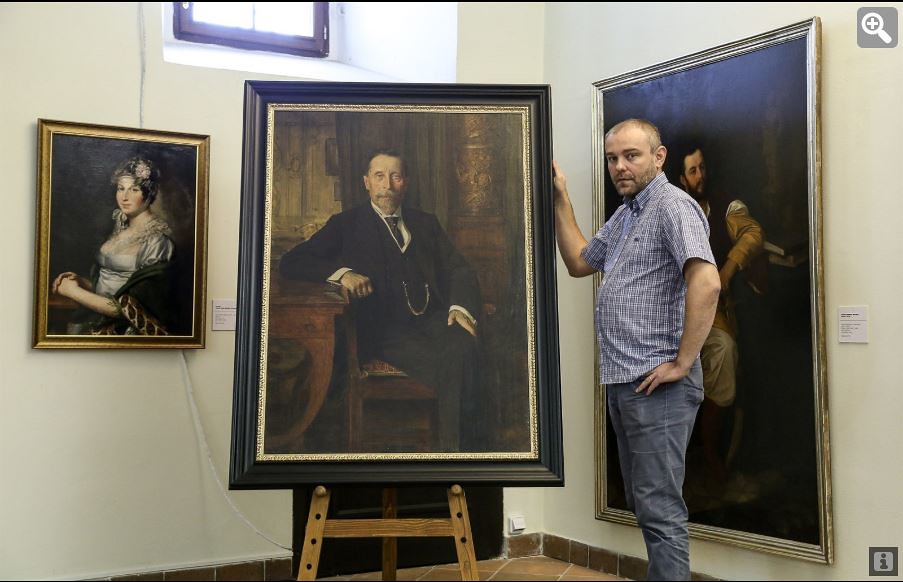
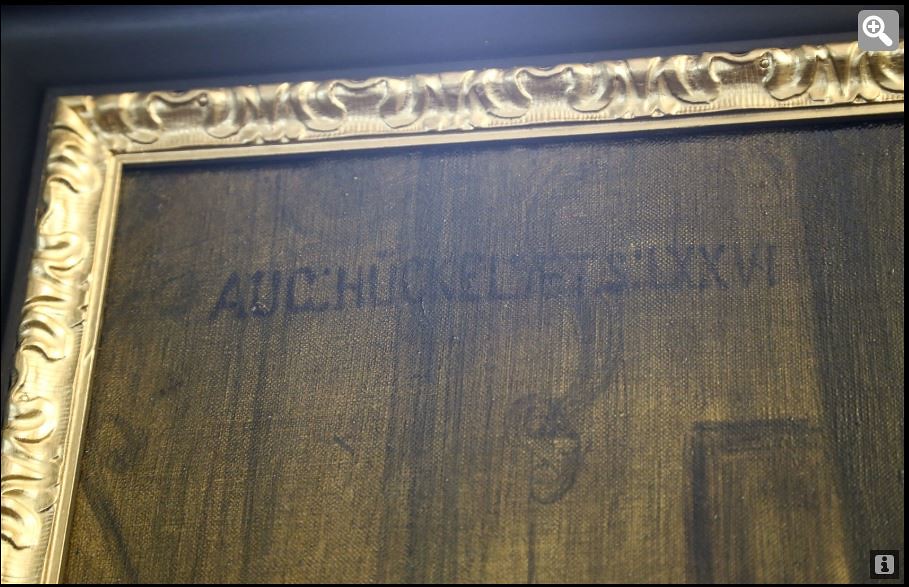
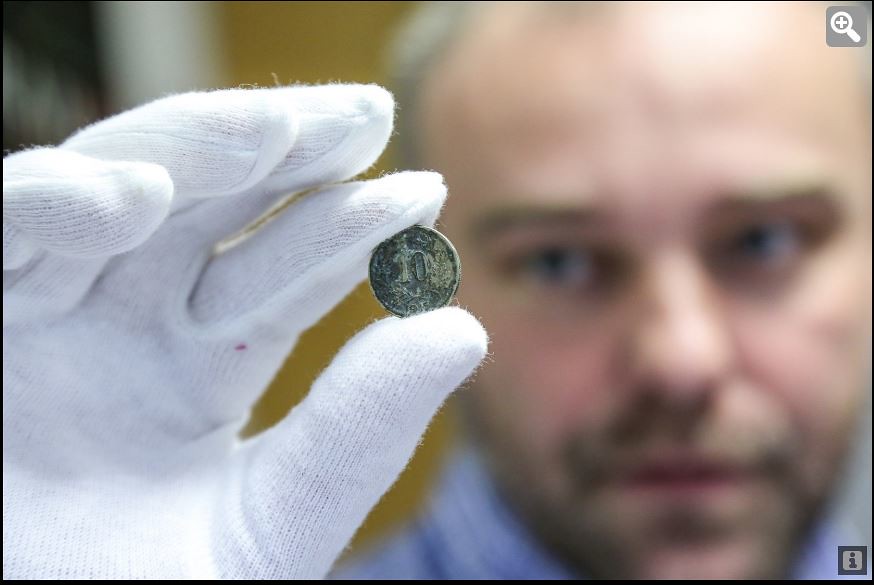
2 October 2015 20:05
"In the Austrian antique shop they have a painting from which you are a factory man from your city." A recent report of a compatriot living in the southern neighbors caused an uproar in the Novojičín Museum. And she also made an effort to return a valuable piece back to New Jičín."
As soon as it turned out, four years ago, an unknown portrait of August Hückel (1838-1917), the most successful member of the dynasty of the hat factories of the renowned firm, the predecessor of Tonaku Nový Jičín, was left unnoticed.
"August Hückel was a successful entrepreneur, a patron, he was also active in the town hall, and in 1910 he became an honorary citizen of Nový Jičín," said Radek Polách** from the Novojičín Museum."
The painting was painted by the relatively unknown painter Janowitsch in 1914. At that time, Hückel was 76 years old and died three years later.
"Thanks to the picture, we can see part of the period interior of one of the Hückel villas," he remarked to and revealed that the museum had bought the work for several tens of thousands of crowns.
When the picture was taken over by the restorer Václav Chovanec, he found a ten-year period behind the frame. The museum has also discovered how the painting was in the antiques. The Hückel descendants have left some of the objects to the new owner of their home. And he sold some things.
"We know about other paintings, furniture and period equipment from the Hückel estate. We would like to return to New Jičín as much as possible, "he said.
** I met Radek Polách back in 2011 when I visited the Novojičín Museum. He is the man standing to right of the August Hückel portriat. Radek setup a rare tour of Tonak / JHS factory for me and has also supplied me with very valuable information over the years which I have made available here and on my website.
https://ostrava.idnes.cz/muzeum-nov...avy.aspx?c=A151002_2195743_ostrava-zpravy_jog



2 October 2015 20:05
"In the Austrian antique shop they have a painting from which you are a factory man from your city." A recent report of a compatriot living in the southern neighbors caused an uproar in the Novojičín Museum. And she also made an effort to return a valuable piece back to New Jičín."
As soon as it turned out, four years ago, an unknown portrait of August Hückel (1838-1917), the most successful member of the dynasty of the hat factories of the renowned firm, the predecessor of Tonaku Nový Jičín, was left unnoticed.
"August Hückel was a successful entrepreneur, a patron, he was also active in the town hall, and in 1910 he became an honorary citizen of Nový Jičín," said Radek Polách** from the Novojičín Museum."
The painting was painted by the relatively unknown painter Janowitsch in 1914. At that time, Hückel was 76 years old and died three years later.
"Thanks to the picture, we can see part of the period interior of one of the Hückel villas," he remarked to and revealed that the museum had bought the work for several tens of thousands of crowns.
When the picture was taken over by the restorer Václav Chovanec, he found a ten-year period behind the frame. The museum has also discovered how the painting was in the antiques. The Hückel descendants have left some of the objects to the new owner of their home. And he sold some things.
"We know about other paintings, furniture and period equipment from the Hückel estate. We would like to return to New Jičín as much as possible, "he said.
** I met Radek Polách back in 2011 when I visited the Novojičín Museum. He is the man standing to right of the August Hückel portriat. Radek setup a rare tour of Tonak / JHS factory for me and has also supplied me with very valuable information over the years which I have made available here and on my website.
https://ostrava.idnes.cz/muzeum-nov...avy.aspx?c=A151002_2195743_ostrava-zpravy_jog
David Niles
New in Town
- Messages
- 41
- Location
- Ritzville
No worriesThanks for checking. Sorry about the sweatband.
Featured products
-
 John Lofgren Monkey Boots Shinki Horsebuttt - $1,136 The classic monkey boot silhouette in an incredibly rich Shinki russet horse leather.
John Lofgren Monkey Boots Shinki Horsebuttt - $1,136 The classic monkey boot silhouette in an incredibly rich Shinki russet horse leather. -
 Grant Stone Diesel Boot Dark Olive Chromexcel - $395 Goodyear welted, Horween Chromexcel, classic good looks.
Grant Stone Diesel Boot Dark Olive Chromexcel - $395 Goodyear welted, Horween Chromexcel, classic good looks. -
 Schott 568 Vandals Jacket - $1,250 The classic Perfecto motorcycle jacket, in a very special limited-edition Schott double rider style.
Schott 568 Vandals Jacket - $1,250 The classic Perfecto motorcycle jacket, in a very special limited-edition Schott double rider style.
Great stuff, Steve. Thanks for sharing. I'll be on the lookout for that book.I was doing some online searching and discovered there was explosion at one the A. Peschel Villas in Šenov near Nový Jičín, Czech Republic back in 2015. Turns out it was insurance fraud gone wrong. Two bodies were found in the debris.
"The explosion of the villa, inside the corpse."
https://translate.google.com/translate?sl=cs&tl=en&js=y&prev=_t&hl=en&ie=UTF-8&u=https://ostrava.idnes.cz/policiste-rok-od-vybuchu-v-senovske-vile-stale-neukoncili-vysetrovani-13q-/ostrava-zpravy.aspx?c=A160113_2218147_ostrava-zpravy_woj&edit-text=&act=url
I took photos of the two A.Peschel Villas when I visited back in April 2011. The A. Peschel factory buildings were being demolished at that time to make room for a retail mall.
This is the villa where the explosion took place (in the basement).

This is the second villa which is next door.

http://germanaustrianhats.invisionzone.com/index.php?/topic/8-peschel-hutfabrik/page-2#entry954
You can see there were major alterations made from their heyday.

Behind the forgotten glory of Peschel's hat factory and Peschel's villas
g Under this name, the Language and Education Center has prepared
on Tyrsova Street in Nový Jičín visit places that are not
so famous as Hückel's villa and Hückel's hat factory,
but they are very interesting. The building plots that Anton
Peschel and his companion Jan Popp bought at
the territory of Schönau(today Šenov), were originally the property of the Gothic estate.
And Anton Peschel, the owner of the mill, decided in
1869 to build a hat factory. From the old chronicle of Schönau - Neutitshein (today Šenov u Nového Jičína)
and other documents show that after initial difficulties with
the factory it began to grow and its products got
popularity both at home and abroad. Only when we stood in the courtyard
today's demolition building, we realized it
scope and entrepreneurship with which the family expanded the factory;
bought the liquor of Simon Adler and rebuilt it to the butcher
and a pub with renowned cuisine, the garden restaurant was also known,
built a hairdresser, dye, sawmill, used Grasmanka's water, which was so pure that it was possible to bathe in it. Already in 1913 they asked for permission to build a train siding, purchased
and let the old house colony over
Grasmanka, who previously served mainly cattle,
and built apartments for employees. They lived in them even after
World War II. In the courtyard you can see the remaining factory buildings,
waiting for demolition, but also clerical flats or wooden ones
porches of residential buildings. Production stopped here on 1 February 1949
and the object was taken over by the Ministry of National Defense, today it belongs
Schönau's.
And what about Peschel's villas? Both of the main representative Peschel villas
there are more than a hundred ladies and their appearance several times
changed, as illustrated by period drawings and photographs. Are placed
in the gardens at the main road to Schönau - Neutitshein, so everyone is here
can also be seen from the outside. And at the older one with a beautiful loggia, which
is referred to as Anton Peschel Villa (jr.), we have nothing else
it was not private - it was private property and we were not invited.
We at least gathered at the gate as we remembered beautiful spaces
from the time when the school canteen and school were here,
while the gate was silently letting go of the cars and the basement
white dressed figures.
But the second villa, called Karel Peschel's villa, today
The municipal office in Šenov near Nový Jičín (Schönau - Neutitshein) was a delicacy.
We were expected and it was what to watch. Entrance door, marble
staircase, hall lined with wood, fireplace from 1921, wooden
stairs with beautiful handrails, wardrobes built in
wall, beautiful wood clad meeting room, former
a winter garden and many other today's official rooms,
in which the original furniture, doors,
floors, all well maintained, and upholstered benches in the hall,
which encouraged us to sit down and listen to something about a woman,
which initially stood in the background, but eventually became a soul and momentum
the lever of the entire factory and even Honorable Citizen Schönau - Neutitshein.
It was Luisa Peschel, who was born in Doubravice in 1845
above Svitavy and as Aloisia Kolloros came with her parents
in 1864 to New Jičín, where her father Mathias worked
in the city brewery. Already in the following year she married
Anton Peschel (born 1824). Although it is initially related to her
He did not talk much about starting the factory, she certainly was
she was well acquainted with her operations and helped her husband.
In 1885, her husband Anton died and Luisa Peschlová remained
at her 40s alone, with 11 still unpaid
children (four sons and seven daughters) and became the only one
the factory owner. She was good mother and good
a businesswoman, she understood the factory, she could act
with customers. Son of Anton and later Charles
and she sent Joseph to the world at an experienced, at a factory
the daughters and son Rudolph worked as an engineer
on the Austrian runway, he also helped his technical ones
knowledge. In 1912, Mrs Luisa gave up her leadership
factory and died in 1920. The obituary in the magazine
Kravařsko and in the chronicle of Schönau - Neutitshein is referred to as a woman who had a good heart and a generous hand, where there was an emergency, contributed to both the school and the church. She was buried in the family tomb in Schönau - Neutitshein.
We went to another villa over Grasmanka, where we went to the hill
above the track stands the villa from 1925. It belonged to Anton Ernst Peschel
(1899), the founder of the company's founder, and in the shield he has a naked man
and a frog. This modern villa has unfortunately gone through both external and internal
modifications, and another building was added to it
- a hypermodern cube, so Siamese twins were born.
There was a training center, red corner, jesloškolka, apprentice
center. Nowadays, the extension is quite due to the municipal office
nicely adapted for pensioners and the original building is private
property. This time we were expected by the owner
and at least part of the villa we could see, look
to the plans of the original building, to get an idea of the time
modern living - large rooms, winter garden, spiral
staircases, built-in wardrobes with hidden doors, but also a terrace,
bower, garden with stone walls. Everywhere is visible
the owner's desire to preserve as much as possible the beauty of this villa.
It was getting darker when we said goodbye to the landlord and went through
On Vyhlídce housing estate - there was another villa. She wanted her here
to build sister Anthony Ernst dr. Johanna Steinbach
his husband Fritz, the factory manager. But it started
World War II and the plans remained only a stone garden
wall on Anenské street.
And in Anenské we are standing in front of the illuminated other villa, which
originally belonged to factory Weiss. It was romantic
the chateaux of the Loire with its towers, a decorated shield, chimneys,
windows and terraces decorated with grilles, a beautiful entrance gate
and the arbor. Peschel's family owned it until 1945, then
here were flats and finally underwent a rebuilding that completely changed
its appearance and adapted it to the needs of kindergarten.
Beautiful large rooms filled with toys, tables and beds
no longer resemble luxurious living, they breathe
love for children. Thanks to the lady schoolgirl we could go through
also interesting vaulted cellars and on the evening terrace to chat,
what it was like when Peschel came here for a war with a carriage
drawn horses, as remembers from nearby.
Where was the time? Peschels were Germans, their factory
worked for the German army. Already in April 1945 they moved away
mostly to Germany, their property was nationalized.
But...
In 1950, he founded the founder of the factory, Anton Ernst
Peschel in Bavaria in the city of Dinkelsbühl new factory on
hats. From England he brought the necessary machines, among the displaced,
who, after leaving Czechoslovakia, settled in this area, got excellent
co-workers he wanted to continue with in the family
tradition. Hard competition (maybe even Tonak), low demand
and paradoxically the development of automobile "because in the car with a hat
does not bear ", all led to the end of production in 1969. Exactly
One hundred years since its inception, Anton Peschel has disappeared. (Typical Czech propaganda)
Villas of Peschlov family in Šenov, SOkA NJ.
Great to read these little nuggets of hat history you keep coming up with. Thanks, Steve.The Artist's Painting Lay In Austrian Antiquity For Years. Now He Has A Museum



2 October 2015 20:05
"In the Austrian antique shop they have a painting from which you are a factory man from your city." A recent report of a compatriot living in the southern neighbors caused an uproar in the Novojičín Museum. And she also made an effort to return a valuable piece back to New Jičín."
As soon as it turned out, four years ago, an unknown portrait of August Hückel (1838-1917), the most successful member of the dynasty of the hat factories of the renowned firm, the predecessor of Tonaku Nový Jičín, was left unnoticed.
"August Hückel was a successful entrepreneur, a patron, he was also active in the town hall, and in 1910 he became an honorary citizen of Nový Jičín," said Radek Polách** from the Novojičín Museum."
The painting was painted by the relatively unknown painter Janowitsch in 1914. At that time, Hückel was 76 years old and died three years later.
"Thanks to the picture, we can see part of the period interior of one of the Hückel villas," he remarked to and revealed that the museum had bought the work for several tens of thousands of crowns.
When the picture was taken over by the restorer Václav Chovanec, he found a ten-year period behind the frame. The museum has also discovered how the painting was in the antiques. The Hückel descendants have left some of the objects to the new owner of their home. And he sold some things.
"We know about other paintings, furniture and period equipment from the Hückel estate. We would like to return to New Jičín as much as possible, "he said.
** I met Radek Polách back in 2011 when I visited the Novojičín Museum. He is the man standing to right of the August Hückel portriat. Radek setup a rare tour of Tonak / JHS factory for me and has also supplied me with very valuable information over the years which I have made available here and on my website.
https://ostrava.idnes.cz/muzeum-nov...avy.aspx?c=A151002_2195743_ostrava-zpravy_jog
- Messages
- 17,639
- Location
- Maryland
Stefan, Thanks! The "Chapeau, Das Westalgäu behütet die Welt, Die Geschichte der Hutprodukrion in Lindenberg und Umgebung, 2015" has a lot of good information. Aurel Huber is a company I haven't come across often so I need to look for more of their hats. It could be they didn't work much under their brand name. I came across the A. Peschel and August Hückel nuggets while doing some online searching.
Members online
- SpruceMoose
- belfastboy
- Ernest P Shackleton
- Albe64
- pillepalle123
- moanamay824
- Boyo
- cl206
- barthestole
- Burnsie5463
- Cheech
- TartuWolf
- maxmerkle_official
- Olumin
- Kenan
- mdgnowles
- SR James
- X83
- dangibbons1981
- torfjord
- moktabe
- Tom71
- Claudio Pellerito
- jlee562
- Will Zach
- Kunja
- Herrvallmo
- hd3kmize
- quikrick
- Dani Rose
- The Lost kansan
- El Marro
- Khilij
- mihai
- Jauntyone
- Randomuser
- Nickelman2005
- voodootomato
- Peacoat
- hieu
- Vladyslav
- saucerfiend
- moehawk
- joezam713
- RiteStuffBryan
- livelyjames
- jweaks
- unhatted
- Cskarev
- lina
Total: 3,714 (members: 78, guests: 3,636)